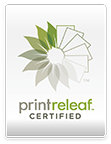

It is well recognised that stem cells from cord blood and cord tissue have remarkable therapeutic potential, however the types of cells differ in each product.
How are cord blood and cord tissue collected and stored?
Cord blood banking involves collecting and cryogenically freezing the blood from within the umbilical cord after birth. In cord tissue banking, small segments of the umbilical cord are collected, cryopreserved and stored.
Cord blood stem cells are well accepted in clinical use
Cord blood contains hematopoietic (blood making) stem cells, and has been successfully used for over 25 years in the treatment of 80+ conditions including blood and bone marrow disorders such as the leukaemia’s and anaemias, immune deficiencies and certain genetic disorders (1). Cord blood from a child itself, or from a sibling has the amazing potential to restore the bone marrow, blood and immune cell systems following chemotherapy. If sibling cord blood is used, then the donor cells may also have the ability to attack cancer cells remaining in a patient or replace a bone marrow deficiency with healthy cells after chemotherapy. The first cord blood transplant, which was undertaken in 1988, set the scene for the remarkable success story of this treatment option. An interview with Matthew Farrow who received this pioneering cord blood transplant can be read here (2).
Cord blood stem cells in regenerative medicine
In recent years, cord blood has also shown potential in the field of regenerative medicine and is undergoing clinical trials in the treatment of different conditions such as autism, cerebral palsy, diabetes and stroke. The benefit of cord blood in regenerative therapies has been attributed to the presence of non-haematopoietic cells called mesenchymal stem cells (MSCs) within the cord blood.
Regenerative power of cord tissue stem cells
Although cord blood contains MSCs, the Wharton’s jelly layer inside cord tissue has been shown to be exceptionally rich in these particular stem cells. This means that cord tissue banking for future regenerative cellular therapeutics is particularly relevant. MSCs are key players in this field as they help to heal or regenerate injured or diseased tissues. They have the ability to differentiate into certain different cell types. However, more importantly, they can damp down harmful immune processes, they possess anti-inflammatory potential and also produce a range of proteins that can promote healing of damaged tissues at the site of injury.
The possible uses of MSCs, such as those that are abundant in cord tissue, are showing encouraging results in clinical trials. They are being used to treat cardiac disease, neural and spinal cord injuries, skeletal injuries, skin wounds, autoimmune and inflammatory diseases to name a few (3, 4, 5).
Clinical trials using cord tissue
As of April 2020, there were 155 clinical trials listed worldwide using MSCs from cord tissue. The Polski Bank Komorek Macierzystych (PBKM) with which Smart Cells is affiliated, is a leading provider of MSCs from cord tissue. By March 2021, PBKM had supplied MSCs from cord tissue Wharton’s jelly for the treatment of 1687 patients on registered clinical trials.
Very recently, the intravenous transplantation of MSCs sourced from cord tissue has been shown to be safe and effective in the treatment of critically ill patients with COVID-19 pneumonia (6).
Present and future
Although cord blood and tissue stem cells do share some benefits, each has many advantages of their own. We are living in an exciting era in modern medicine. Both cord blood and cord tissue are being used in a wide variety of established and cutting edge treatments that hold promise for important and unprecedented developments in stem cell therapeutics (7, 8).
References
- https://www.frontiersin.org/articles/10.3389/fped.2020.570282/full
- https://parentsguidecordblood.org/en/news/interview-matt-farrow-recipient-worlds-1st-cord-blood-transplant
- https://stemcellres.biomedcentral.com/articles/10.1186/s13287-020-02011-z
- https://www.researchgate.net/publication/338896676_Therapeutic_Potential_of_Wharton%27s_Jelly_Mesenchymal_Stem_Cells_for_Diabetes_Acievements_and_Challenges
- https://www.hindawi.com/journals/bmri/2015/430847/
- https://stemcellres.biomedcentral.com/articles/10.1186/s13287-020-01725-4
- https://parentsguidecordblood.org/en/news/how-many-clinical-trials-use-cord-blood-or-cord-tissue
- https://www.futuremedicine.com/doi/full/10.2217/rme-2017-0066



